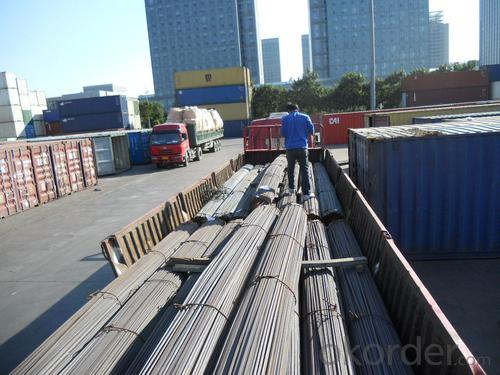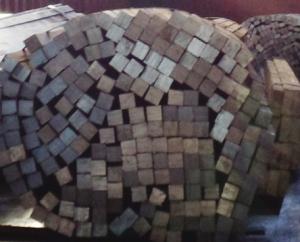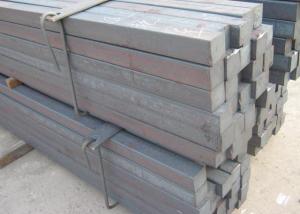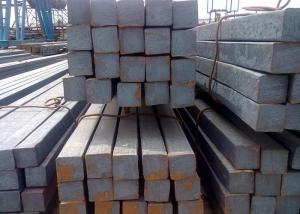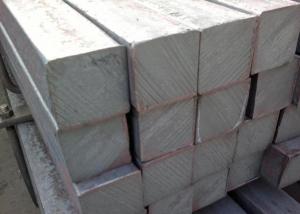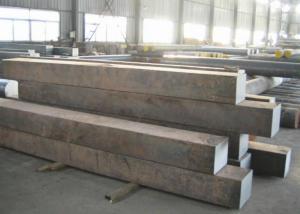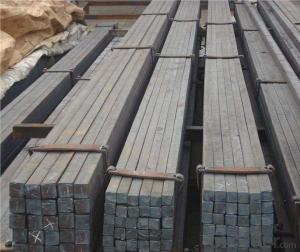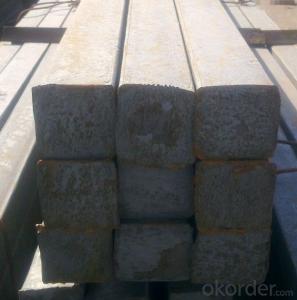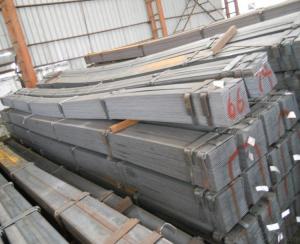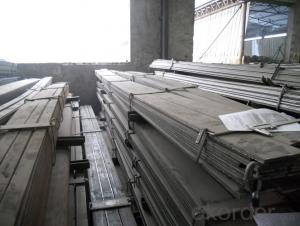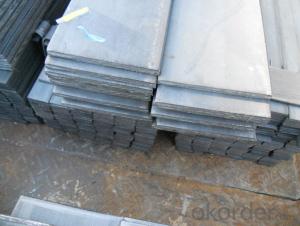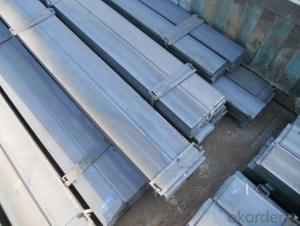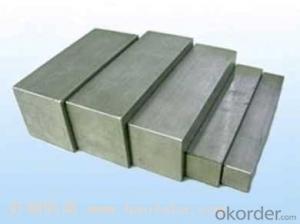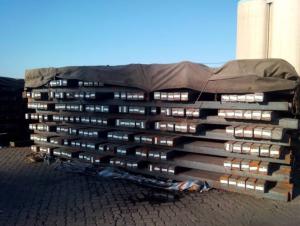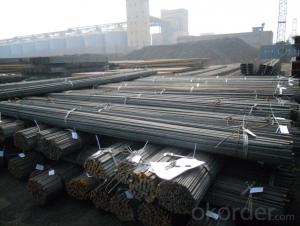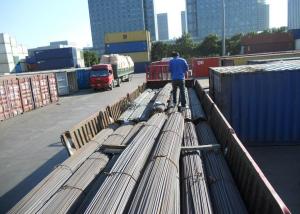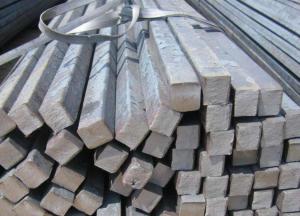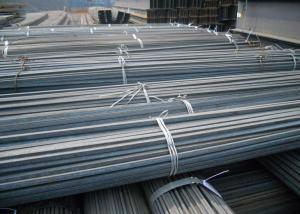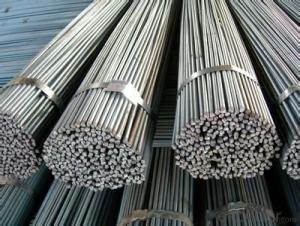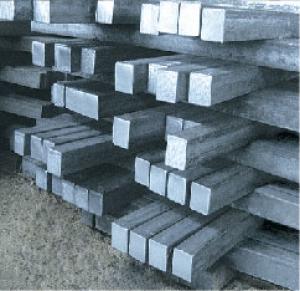Stainless Steel Square Bar with Grade Q235 and Q275
- Loading Port:
- China Main Port
- Payment Terms:
- TT or LC
- Min Order Qty:
- -
- Supply Capability:
- -
OKorder Service Pledge
OKorder Financial Service
You Might Also Like
Product Description:
OKorder is offering Stainless Steel Square Bar with Grade Q235 and Q275 at great prices with worldwide shipping. Our supplier is a world-class manufacturer of steel, with our products utilized the world over. OKorder annually supplies products to European, North American and Asian markets. We provide quotations within 24 hours of receiving an inquiry and guarantee competitive prices.
Product Applications:
Stainless Steel Square Bar with Grade Q235 and Q275 are ideal for structural applications and are widely used in the construction of buildings and bridges, and the manufacturing, petrochemical, and transportation industries.
Product Advantages:
OKorder's Stainless Steel Square Bar with Grade Q235 and Q275 are durable, strong, and resist corrosion.
Main Product Features:
· Premium quality
· Prompt delivery & seaworthy packing (30 days after receiving deposit)
· Corrosion resistance
· Can be recycled and reused
· Mill test certification
· Professional Service
· Competitive pricing
Product Specifications:
The Stainless Steel Square Bar is hot rolled, range from 5mm to 100mm,
Grade: Q195 Q235 Q275 and equivalent.
The monthly production capacity can be 500-1000 tons
It is used as structure steel.
The MOQ is usually 50 tons
Canbe delivered by bulk vessel or by container.
FAQ:
Q1: Why buy Materials & Equipment from OKorder.com?
A1: All products offered byOKorder.com are carefully selected from China's most reliable manufacturing enterprises. Through its ISO certifications, OKorder.com adheres to the highest standards and a commitment to supply chain safety and customer satisfaction.
Q2: How do we guarantee the quality of our products?
A2: We have established an advanced quality management system which conducts strict quality tests at every step, from raw materials to the final product. At the same time, we provide extensive follow-up service assurances as required.
Q3: How soon can we receive the product after purchase?
A3: Within three days of placing an order, we will begin production. The specific shipping date is dependent upon international and government factors, but is typically 7 to 10 workdays.
Q4: What makes stainless steel stainless?
A4: Stainless steel must contain at least 10.5 % chromium. It is this element that reacts with the oxygen in the air to form a complex chrome-oxide surface layer that is invisible but strong enough to prevent further oxygen from "staining" (rusting) the surface. Higher levels of chromium and the addition of other alloying elements such as nickel and molybdenum enhance this surface layer and improve the corrosion resistance of the stainless material.
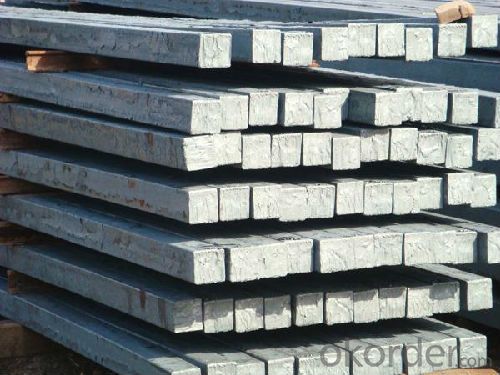
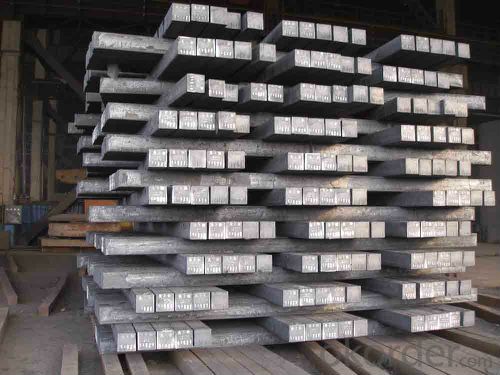
- Q: Can a steel square be used for tile backsplash layout?
- Yes, a steel square can be used for tile backsplash layout. A steel square is a versatile tool that can help with accurate measurements and angles, ensuring precise tile placement. It can be used to create straight lines, right angles, and check for levelness during the layout process.
- Q: Can a steel square be used for checking the squareness of deck posts?
- Yes, a steel square can be used for checking the squareness of deck posts. A steel square, also known as a framing square or carpenter's square, is a versatile tool commonly used in carpentry and construction. It consists of a long arm and a shorter arm, forming a right angle. One of the primary purposes of a steel square is to ensure that corners and angles are perfectly square. To use a steel square for checking the squareness of deck posts, you can follow these steps: 1. Position the steel square against one side of the deck post, ensuring that the long arm rests against the post while the shorter arm extends vertically. 2. Observe the alignment of the shorter arm against the adjacent side of the deck post. If the post is perfectly square, the shorter arm of the steel square should be flush against the post without any gaps or overlaps. 3. Repeat this process on all four sides of the deck post to confirm its squareness. If the steel square consistently aligns flush with all sides, the post can be considered square. 4. In case the steel square does not align properly or there are gaps or overlaps, adjustments can be made to the post. This can involve repositioning or re-measuring the post, ensuring it is at right angles to the deck surface. It is important to note that while a steel square is an effective tool for checking the squareness of deck posts, it should be used in combination with other methods, such as measuring diagonals or using a level, to ensure accurate and precise results.
- Q: The moment 2mm thick galvanized square steel tube using what welding methods
- If the mind zinc burning for the tube effect, can use silicon bronze gas welding, Odin 204Si, with special reference "Wiodin 204Si bronze wire in welding of galvanized plate"
- Q: 4*4 steel welding frame tank do strong?
- Or more strong legs 4 legs is not easy to findAdd a circle support at the bottom of the cylinder, top two, it is better to get a board, more stable table
- Q: Can a steel square be used for checking the levelness of floors?
- No, a steel square cannot be used for checking the levelness of floors. A steel square, also known as a carpenter's square, is primarily used for measuring and marking right angles in woodworking. It is not designed to accurately determine the levelness of surfaces. To check the levelness of floors, a tool such as a spirit level or laser level should be used. These tools are specifically designed for this purpose and provide accurate measurements of horizontal or vertical levelness.
- Q: How do you use a steel square to mark cutting lines?
- To use a steel square to mark cutting lines, you first need to ensure that the square is clean and free from any debris or dirt. Then, place the square against the material you want to cut, making sure that the edge of the square is aligned with the desired cutting line. Next, hold the square firmly in place and use a pencil or a scribe to mark the cutting line along the edge of the square. Make sure to apply enough pressure to leave a visible mark, but not so much that it damages the material. If you need to mark multiple cutting lines parallel to each other, you can use the square's measurement marks or the heel of the square. Align the desired measurement mark or the heel of the square with the previous marking and repeat the process to create evenly spaced cutting lines. Once you have marked all the necessary cutting lines, double-check their accuracy before proceeding with the cutting process. It is essential to take your time and be precise when using a steel square to mark cutting lines to ensure accurate and clean cuts.
- Q: Can a steel square be used for setting up a table saw?
- Yes, a steel square can be used for setting up a table saw. A steel square, also known as a carpenter's square or framing square, is a versatile tool that can be used for various woodworking tasks, including the setup of a table saw. It can be used to ensure that the table saw blade is perpendicular to the table, which is crucial for accurate and precise cuts. By placing the steel square against the blade and the table, adjustments can be made to align the blade perfectly with the table surface. Additionally, the steel square can also be used to check the alignment of the fence, ensuring it is parallel to the blade for accurate rip cuts. Therefore, a steel square is a valuable tool for setting up a table saw and ensuring its optimal performance.
- Q: What are the common materials used to make a steel square?
- The common materials used to make a steel square include steel, aluminum, and sometimes brass or wood for the handle.
- Q: How do you use a steel square to lay out stairs?
- To use a steel square to lay out stairs, start by determining the desired rise and run of the stairs. Then, use the square to mark the tread and riser dimensions on the stringers. The square's blade can be aligned with the rise and run measurements, and the tongue can be used to mark the cuts on the stringers. This process helps ensure accurate and consistent measurements for each step of the stairs.
- Q: Can a steel square be used for checking the squareness of a fence?
- Yes, a steel square can be used to check the squareness of a fence. A steel square, also known as a framing square or carpenter's square, is a versatile tool commonly used in carpentry and woodworking to ensure accuracy and squareness. It consists of a 90-degree angle on one side and a 45-degree angle on the other, making it ideal for checking if corners or angles are perfectly square. By placing the steel square against the fence's corners or edges, one can determine if they are at a perfect 90-degree angle. If the steel square fits snugly and aligns perfectly with the fence, then it indicates that the fence is square. If there is any gap or misalignment, it indicates that adjustments need to be made to achieve squareness. Therefore, a steel square is a reliable tool for checking the squareness of a fence.
Send your message to us
Stainless Steel Square Bar with Grade Q235 and Q275
- Loading Port:
- China Main Port
- Payment Terms:
- TT or LC
- Min Order Qty:
- -
- Supply Capability:
- -
OKorder Service Pledge
OKorder Financial Service
Similar products
Hot products
Hot Searches
Related keywords




